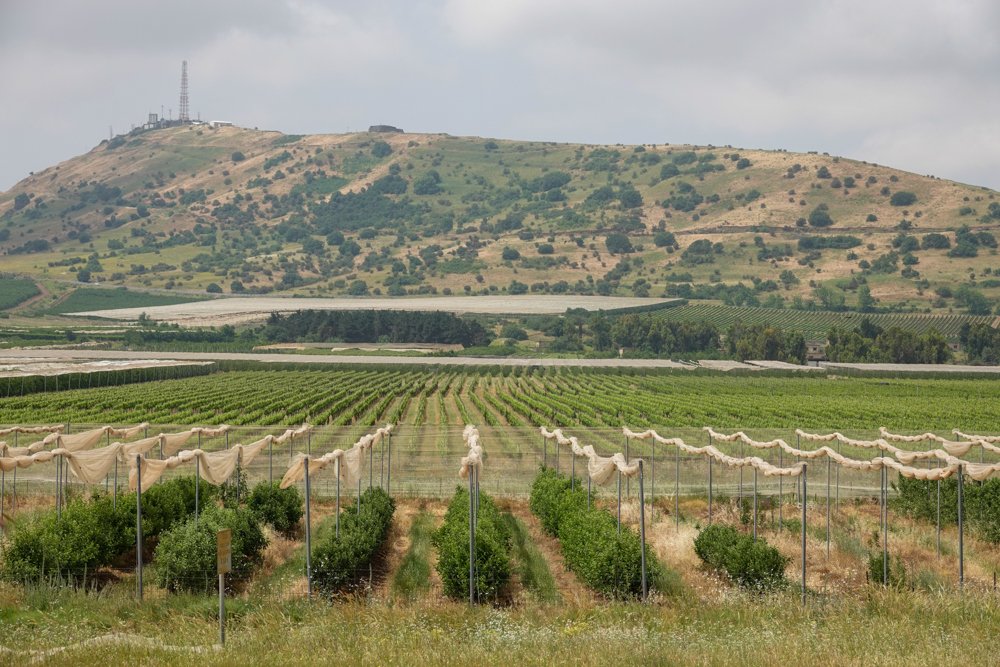Ein Zivan kibbutz Farming
We are still at the Ein Zivan kibbutz with Ilan Shulman. Ilan might have been a cowboy, a soldier, and an intelligence officer but he really knew his farming. I was fortunate enough to sit in the front seat with him the whole time and I peppered him with questions about crops and farming techniques as we drove around and he was incredibly knowledgeable about agriculture, irrigation, fruit varieties, and farming techniques.
The Ein Zivan kibbutz has branched out to other economic endeavors but agriculture is still their primary economic activity. We saw orchards of apples, pears, cherries, kiwi, mango, avocado, lychee, plus vineyards. They also have beef cows and chickens.
I’m not sure what crop will be grown here as Ilan was talking when we passed here. But most kibbutzim are 1,000 acres so they are fair sized farms. You can see the size of their agricultural endeavors.
I’m not sure what these trees are but what intrigued me was the netting over the orchard. Ilan said it was for sun and moisture control and creating a microclimate to help the trees grow better. We saw this in much of Israel and it allows them to grow plants that don’t seem at home in this desert, such as bananas.
This is a water reservoir that they built for irrigation water. I was most impressed by the size of it. You can see some snow on Mount Hermon in the background.
This is just another ag photo. You might again notice the netting available on the nearest orchard trees. I believe it’s a vineyard behind that. They do have a separately run winery on the kibbutzim property.
We were told that prior to the 1967 war, when Syria occupied the Golan Heights, the Syrians bombed Israel every day from the Golan Heights. Israel felt they couldn’t live with that so they waged war and gained the Golan region. But even with that, it was and probably still is, a risky place to live. In the last photo, you can see a bomb shelter at the kibbutz and that’s just a part of life for Israeli’s in this part of the world.





